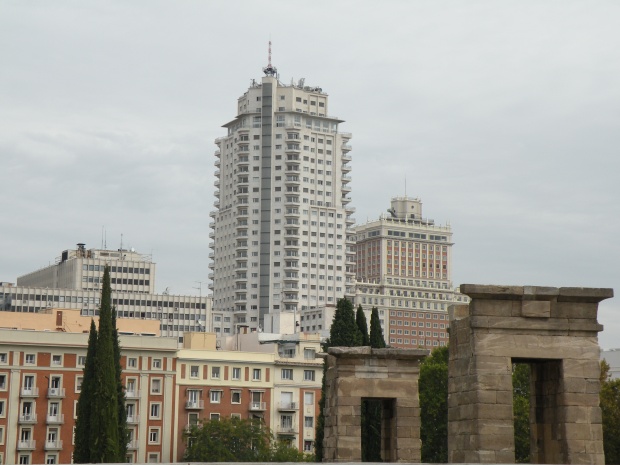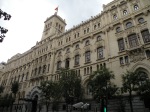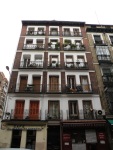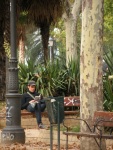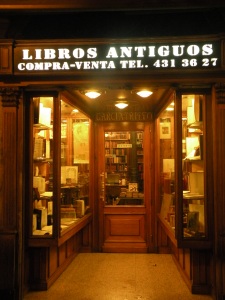
Don Pedro Velasquez: We are like blind men lost in the streets of a big city. The streets lead to a goal, but we often return to the same places to get to where we want to be. I can see a few little streets here which, as it is now, are going nowhere. New combinations have to be arranged, then the whole will be clear, because one man cannot invent something that another cannot solve.
 Zaragoza is the capital of Aragon, Spain. I mention it cos the name brings to mind Aragorn from Lord of the Rings. The most famous sights are Basilica del Pilar, La Seo Cathedral and the Aljaferia Palace (above). Together with La Seo and the Aljaferia, several other buildings form part of the Muddejar Architecture of Aragon which is a UNESCO World Heritage Site.
Zaragoza is the capital of Aragon, Spain. I mention it cos the name brings to mind Aragorn from Lord of the Rings. The most famous sights are Basilica del Pilar, La Seo Cathedral and the Aljaferia Palace (above). Together with La Seo and the Aljaferia, several other buildings form part of the Muddejar Architecture of Aragon which is a UNESCO World Heritage Site.
We landed in Saragossa late evening and got to the city centre by bus. Then walking through wet and empty streets we admired the architecture and urban atmosphere of the city. When we got to our cheap hotel what welcomed us was crystal chandelier, bronzes and magnificent mosaics on wall tiles. I can recommend it as a very nice place to stay with a good breakfast. If I can remember correctly it was called Hotel Paris Centro at San Pablo, 19, 50003 Saragossa. We got a one bed apartment in the building just opposite to the entrance to the hotel. Clean and fresh. Inside the room we found tea and herbal tea and kitchen space with electric kettle. Very useful after a flight. The only thing we couldn’t find was an open shop selling cheap but nice red wine. We got to a restaurant that was supposed to be closed but the owner treated us to some tapas.
 Next morning was all about picking up the car and leaving for Belchite, which I already described previously. We did some sightseeing later on, on our way back from Sant Carles de la Rapita. We failed to book accommodation in advance not knowing it was a holiday and everything will be booked. We ended up going from one cheap looking place to another finally installing ourselves in something that looked like an old socialist apartment block. On one floor some of the apartments were joined together creating a hotel. Interesting experience especially when a pipe outside in the street burst and we had no water to take a shower.
Next morning was all about picking up the car and leaving for Belchite, which I already described previously. We did some sightseeing later on, on our way back from Sant Carles de la Rapita. We failed to book accommodation in advance not knowing it was a holiday and everything will be booked. We ended up going from one cheap looking place to another finally installing ourselves in something that looked like an old socialist apartment block. On one floor some of the apartments were joined together creating a hotel. Interesting experience especially when a pipe outside in the street burst and we had no water to take a shower.
 Anyway, the city is beautiful. It has a lot of greenery and the Basilica, Palace and old town are amazing. What impressed me the most was Qasr Aljafariya – fortified medieval Islamic palace built during the second half of the XI century. It was constructed during the reign of the independent Hudid ruler of Saragossa, Ahmad I b. Sulayman , Sayf al-Dawla ‘Imad al-Dawla al-Muqtadir. Through the centuries it changed into a complex group of structures that have been built around one another from the Islamic age until modern times, including Christian modifications during the Middle Ages. The palace currently contains the Cortes (regional parliament). It resembles what one can expect to see in tales from the Arabian Nights. It’s possible to have a virtual tour of the Palace, but as you probably know it’s never the same. I’m so looking forward now to visiting Istambul.
Anyway, the city is beautiful. It has a lot of greenery and the Basilica, Palace and old town are amazing. What impressed me the most was Qasr Aljafariya – fortified medieval Islamic palace built during the second half of the XI century. It was constructed during the reign of the independent Hudid ruler of Saragossa, Ahmad I b. Sulayman , Sayf al-Dawla ‘Imad al-Dawla al-Muqtadir. Through the centuries it changed into a complex group of structures that have been built around one another from the Islamic age until modern times, including Christian modifications during the Middle Ages. The palace currently contains the Cortes (regional parliament). It resembles what one can expect to see in tales from the Arabian Nights. It’s possible to have a virtual tour of the Palace, but as you probably know it’s never the same. I’m so looking forward now to visiting Istambul.
The most beautiful part of the Palace form diminutive, highly decorated spaces which have been interpreted as settings intended to evoke paradise for majalis – gatherings of the ruler and a highly exclusive group of companions – at which wine drinking and poetic recitation took place. The interlacing arches and carved stucco ornament of the Aljaferiya achieve a level of complexity and fantasy that possibly can be compared to those of Taj Mahal. But I can’t be sure as I haven’t seen it with my own eyes.
compared to those of Taj Mahal. But I can’t be sure as I haven’t seen it with my own eyes.
The Aljafería Palace was built using traditional models in Islamic palatine architecture: a large open central courtyard leading to all of the living rooms with two pools on the north and south sides. The ceremonial and private rooms, also located on the north and south ends of the building, are preceded by porticoes made up of mixtilinear and poly-lobed arcades that stretch the length of the central courtyard to serve as visual screens.
The best-conserved part of the complex is the north wing. In this area, on the east side of the portico and next to what is believed to have been the great audience chamber of al-Muqtadir, known as the ‘Golden Room’ or ‘Marble Room’, there remains a small octagonal mosque, whose location, intimate character and small size suggest that it was designed as a private oratory for the king and his family.
This slideshow requires JavaScript.
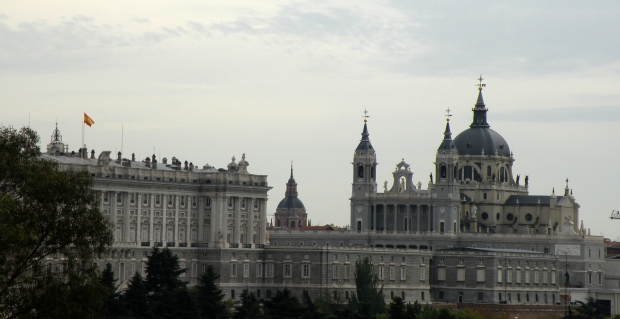 Above you can see the picture of The Palacio Real de Madrid. It’s really impressive. I think I already mentioned the Argentinian restaurant we went to the night on our way to Mexico. Beautiful food. Very, very good. This time my culinary ramble ended in Museo de Jamon. Cheap food, tasty and very filling. Nice coffee as well or a glass of beer.
Above you can see the picture of The Palacio Real de Madrid. It’s really impressive. I think I already mentioned the Argentinian restaurant we went to the night on our way to Mexico. Beautiful food. Very, very good. This time my culinary ramble ended in Museo de Jamon. Cheap food, tasty and very filling. Nice coffee as well or a glass of beer.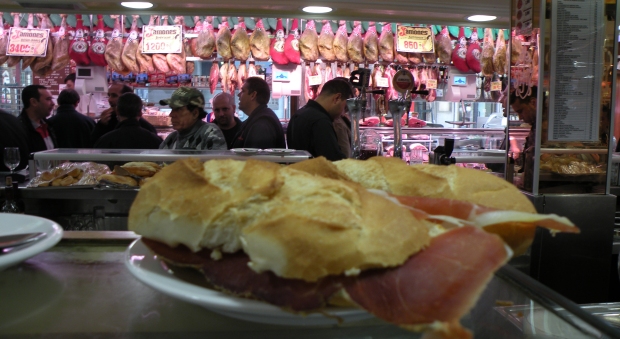 This post will be about things and people I noticed wandering around Madrid on my own, when I was less concerned with sightseeing and more with experiencing the moment in a kind of way. So please do enjoy watching Madrid through my eyes.
This post will be about things and people I noticed wandering around Madrid on my own, when I was less concerned with sightseeing and more with experiencing the moment in a kind of way. So please do enjoy watching Madrid through my eyes.